5. 1. Personnel management and labor motivation 5.

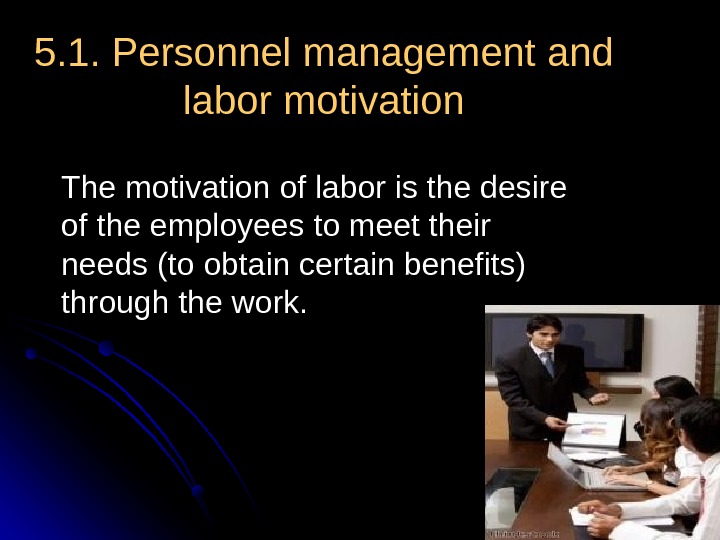




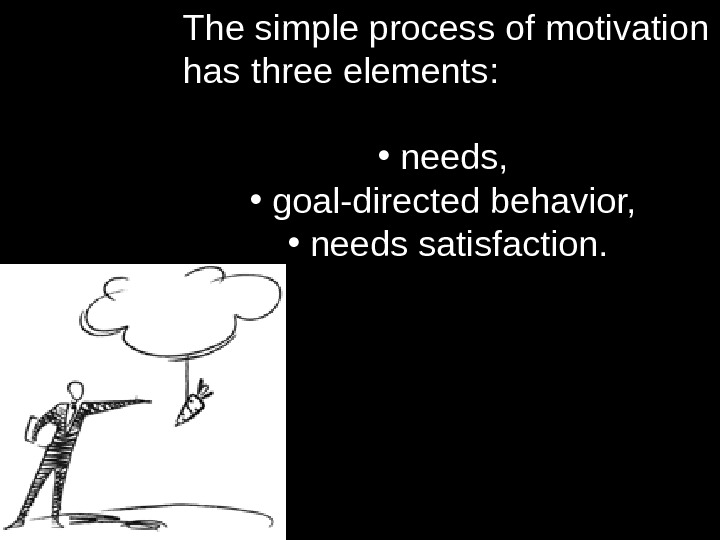


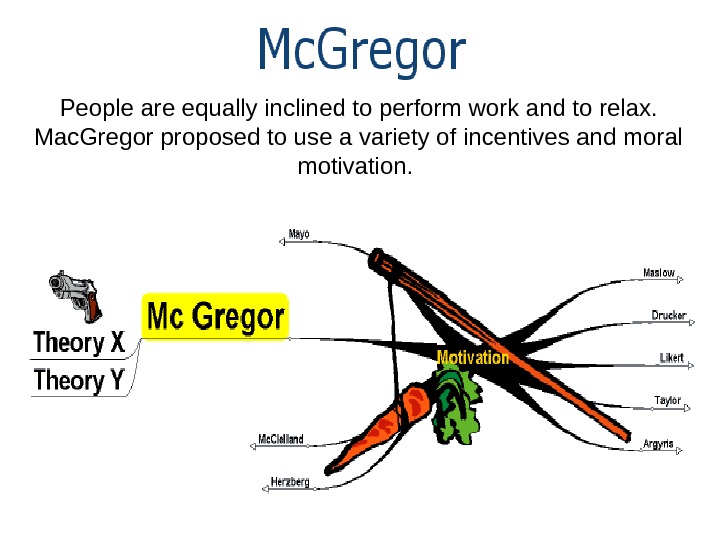



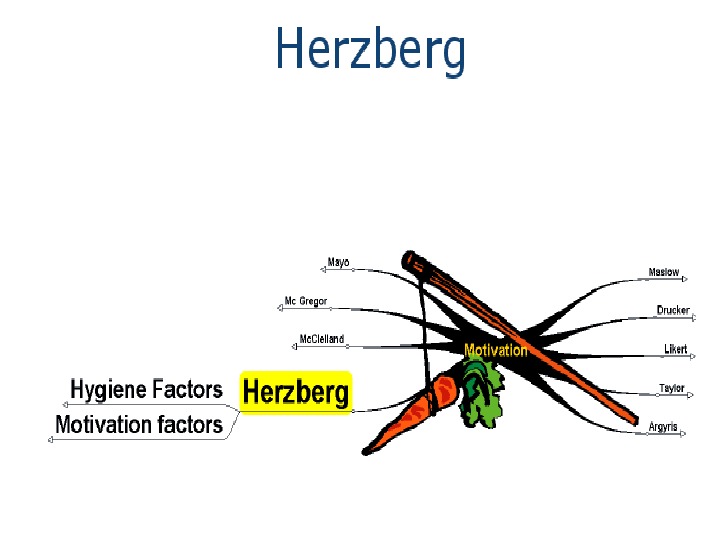
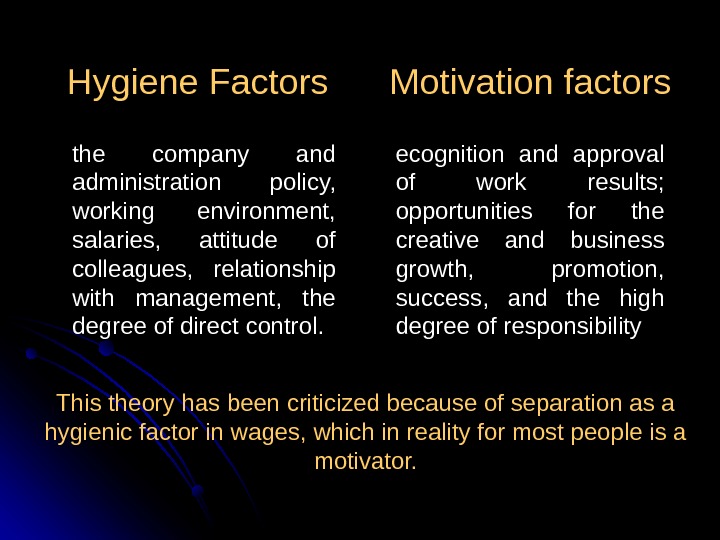
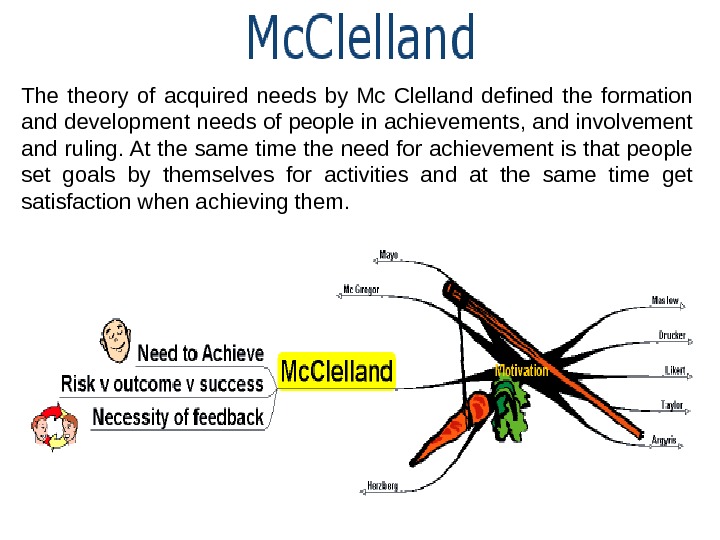

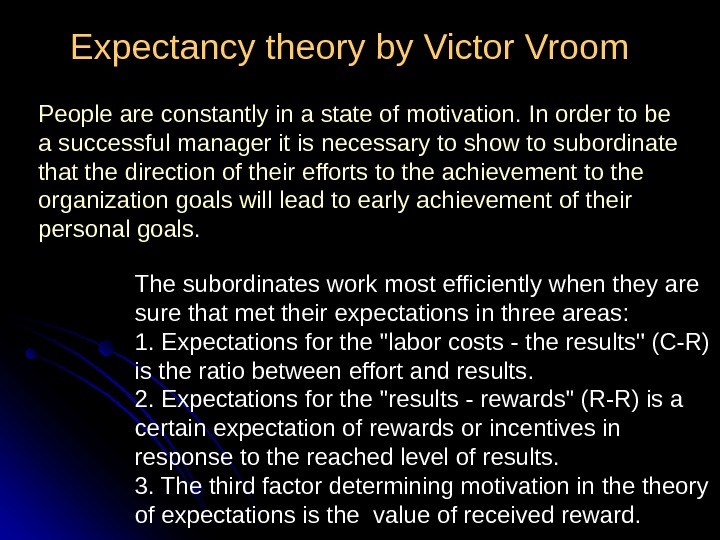

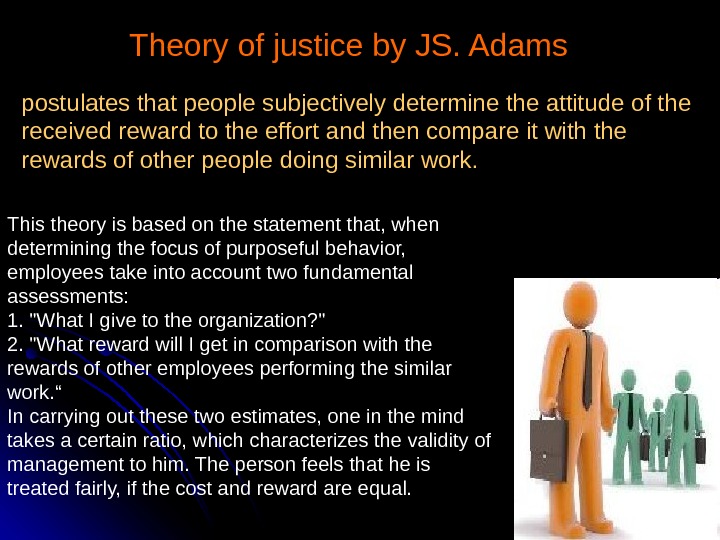
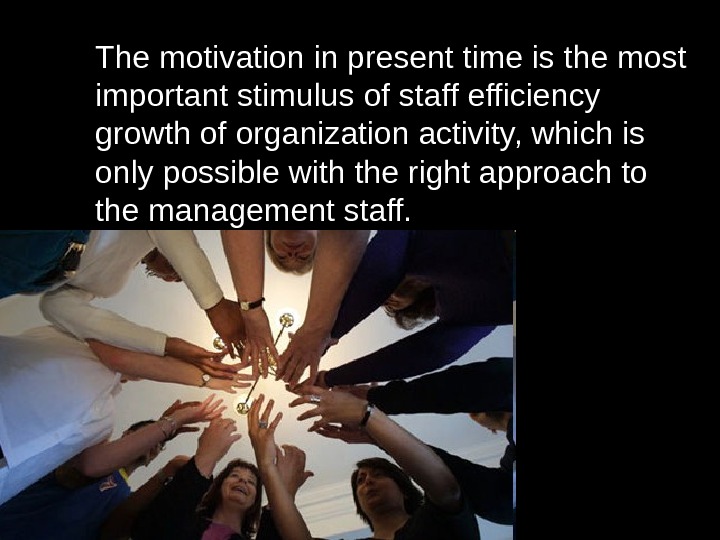
- Размер: 1.6 Mегабайта
- Количество слайдов: 21
Описание презентации 5. 1. Personnel management and labor motivation 5. по слайдам
 5. 1. Personnel management and labor motivation 5. 2. Motivation in organizational context 5. 3. Theories of motivation
5. 1. Personnel management and labor motivation 5. 2. Motivation in organizational context 5. 3. Theories of motivation
 5. 1. Personnel management and labor motivation The motivation of labor is the desire of the employees to meet their needs (to obtain certain benefits) through the work.
5. 1. Personnel management and labor motivation The motivation of labor is the desire of the employees to meet their needs (to obtain certain benefits) through the work.
 a need which an employee wants to satisfy, the benefit that can satisfy this need, the labor force necessary to get the good, the price — the cost of moral and material expenses relating to the implementation of labor. The structure of the motive of work includes: Motives for labor are formed if: a society (or the subject of management) has the required set of benefits resulting from appropriate social and human needs; to obtain benefits it is necessary to get the labor effort of a worker; working activity allows an employee to receive these benefits with less material and moral costs than any other activity.
a need which an employee wants to satisfy, the benefit that can satisfy this need, the labor force necessary to get the good, the price — the cost of moral and material expenses relating to the implementation of labor. The structure of the motive of work includes: Motives for labor are formed if: a society (or the subject of management) has the required set of benefits resulting from appropriate social and human needs; to obtain benefits it is necessary to get the labor effort of a worker; working activity allows an employee to receive these benefits with less material and moral costs than any other activity.
 In modern conditions motivation has changed considerably: has become predominant socio-economic and socio-psychological methods of personnel management and it has become more important in comparison with the administrative ones, management now intends to implement the cooperation of staff and administration to achieve its objectives; the principle of collegiality in management has been further developed. Collegiality in management supposes that employers are closely working with each other, in cooperation and interdependence making the managerial staff.
In modern conditions motivation has changed considerably: has become predominant socio-economic and socio-psychological methods of personnel management and it has become more important in comparison with the administrative ones, management now intends to implement the cooperation of staff and administration to achieve its objectives; the principle of collegiality in management has been further developed. Collegiality in management supposes that employers are closely working with each other, in cooperation and interdependence making the managerial staff.
 The leader should not give orders to his subordinates and directs their efforts to help reveal their abilities to form the group of like-minded around him. The purpose of personnel management in this context was the motivation to develop its capabilities for more intensive and productive labor.
The leader should not give orders to his subordinates and directs their efforts to help reveal their abilities to form the group of like-minded around him. The purpose of personnel management in this context was the motivation to develop its capabilities for more intensive and productive labor.
 5. 2. Motivation in organizational context is a process with the help of which the leader motivates other employees to work to achieve the organizational goals, satisfying their personal desires and needs.
5. 2. Motivation in organizational context is a process with the help of which the leader motivates other employees to work to achieve the organizational goals, satisfying their personal desires and needs.
 The simple process of motivation has three elements: • needs, • goal-directed behavior, • needs satisfaction.
The simple process of motivation has three elements: • needs, • goal-directed behavior, • needs satisfaction.
 5. 3. Theories of motivation
5. 3. Theories of motivation
 In theory «X» American researcher F. Taylor noted that persons are born with a dominant motive to rest, do not like to take responsibility, make decisions, participate in management. The stick and the carrot policy
In theory «X» American researcher F. Taylor noted that persons are born with a dominant motive to rest, do not like to take responsibility, make decisions, participate in management. The stick and the carrot policy
 People are equally inclined to perform work and to relax. Mac. Gregor proposed to use a variety of incentives and moral motivation.
People are equally inclined to perform work and to relax. Mac. Gregor proposed to use a variety of incentives and moral motivation.
 S self-importance
S self-importance
 Unlike the presentation of Maslow’s needs, Alderfer allows the implementation process of motivation from both the base of the pyramid to the top, and vice versa, what makes relative to the demarcation of primary and secondary needs, depending on the individual personality The pyramid proposed by Alderfer
Unlike the presentation of Maslow’s needs, Alderfer allows the implementation process of motivation from both the base of the pyramid to the top, and vice versa, what makes relative to the demarcation of primary and secondary needs, depending on the individual personality The pyramid proposed by Alderfer
 The pyramid of needs proposed by Abraham Maslow The pyramid proposed by Alderfer
The pyramid of needs proposed by Abraham Maslow The pyramid proposed by Alderfer

 Hygiene Factors the company and administration policy, working environment, salaries, attitude of colleagues, relationship with management, the degree of direct control. Motivation factors ecognition and approval of work results; opportunities for the creative and business growth, promotion, success, and the high degree of responsibility This theory has been criticized because of separation as a hygienic factor in wages, which in reality for most people is a motivator.
Hygiene Factors the company and administration policy, working environment, salaries, attitude of colleagues, relationship with management, the degree of direct control. Motivation factors ecognition and approval of work results; opportunities for the creative and business growth, promotion, success, and the high degree of responsibility This theory has been criticized because of separation as a hygienic factor in wages, which in reality for most people is a motivator.
 The theory of acquired needs by Mc Clelland defined the formation and development needs of people in achievements, and involvement and ruling. At the same time the need for achievement is that people set goals by themselves for activities and at the same time get satisfaction when achieving them.
The theory of acquired needs by Mc Clelland defined the formation and development needs of people in achievements, and involvement and ruling. At the same time the need for achievement is that people set goals by themselves for activities and at the same time get satisfaction when achieving them.
 There are four basic procedural theories of motivation: Expectancy theory by Victor Vroom; Extended model of expectations by Limon Porter and Edward Lawler; Theory of justice by JS. Adams; Theory of gain by BF Skinner. The majority of modern theories of motivation procedural consider motivation as a process of option management.
There are four basic procedural theories of motivation: Expectancy theory by Victor Vroom; Extended model of expectations by Limon Porter and Edward Lawler; Theory of justice by JS. Adams; Theory of gain by BF Skinner. The majority of modern theories of motivation procedural consider motivation as a process of option management.
 Expectancy theory by Victor Vroom The subordinates work most efficiently when they are sure that met their expectations in three areas: 1. Expectations for the «labor costs — the results» (C-R) is the ratio between effort and results. 2. Expectations for the «results — rewards» (R-R) is a certain expectation of rewards or incentives in response to the reached level of results. 3. The third factor determining motivation in theory of expectations is the value of received reward. People are constantly in a state of motivation. In order to be a successful manager it is necessary to show to subordinate that the direction of their efforts to the achievement to the organization goals will lead to early achievement of their personal goals.
Expectancy theory by Victor Vroom The subordinates work most efficiently when they are sure that met their expectations in three areas: 1. Expectations for the «labor costs — the results» (C-R) is the ratio between effort and results. 2. Expectations for the «results — rewards» (R-R) is a certain expectation of rewards or incentives in response to the reached level of results. 3. The third factor determining motivation in theory of expectations is the value of received reward. People are constantly in a state of motivation. In order to be a successful manager it is necessary to show to subordinate that the direction of their efforts to the achievement to the organization goals will lead to early achievement of their personal goals.
 The basic of model of expectation theory consists of four above-mentioned concepts. Human motivation is directed to the combination of expectations of value and reward valence, which will provide the best satisfaction of needs. The interlink given in the model can be expressed as follows. M = (C / R) (R / R) (Vn) M — motivation; C / R expectations regarding the work — the results; R / R — waiting for results — compensation; VR – value of rewards; Vn – value of needs.
The basic of model of expectation theory consists of four above-mentioned concepts. Human motivation is directed to the combination of expectations of value and reward valence, which will provide the best satisfaction of needs. The interlink given in the model can be expressed as follows. M = (C / R) (R / R) (Vn) M — motivation; C / R expectations regarding the work — the results; R / R — waiting for results — compensation; VR – value of rewards; Vn – value of needs.
 Theory of justice by JS. Adams postulates that people subjectively determine the attitude of the received reward to the effort and then compare it with the rewards of other people doing similar work. This theory is based on the statement that, when determining the focus of purposeful behavior, employees take into account two fundamental assessments: 1. «What I give to the organization? » 2. «What reward will I get in comparison with the rewards of other employees performing the similar work. “ In carrying out these two estimates, one in the mind takes a certain ratio, which characterizes the validity of management to him. The person feels that he is treated fairly, if the cost and reward are equal.
Theory of justice by JS. Adams postulates that people subjectively determine the attitude of the received reward to the effort and then compare it with the rewards of other people doing similar work. This theory is based on the statement that, when determining the focus of purposeful behavior, employees take into account two fundamental assessments: 1. «What I give to the organization? » 2. «What reward will I get in comparison with the rewards of other employees performing the similar work. “ In carrying out these two estimates, one in the mind takes a certain ratio, which characterizes the validity of management to him. The person feels that he is treated fairly, if the cost and reward are equal.
 The motivation in present time is the most important stimulus of staff efficiency growth of organization activity, which is only possible with the right approach to the management staff.
The motivation in present time is the most important stimulus of staff efficiency growth of organization activity, which is only possible with the right approach to the management staff.
